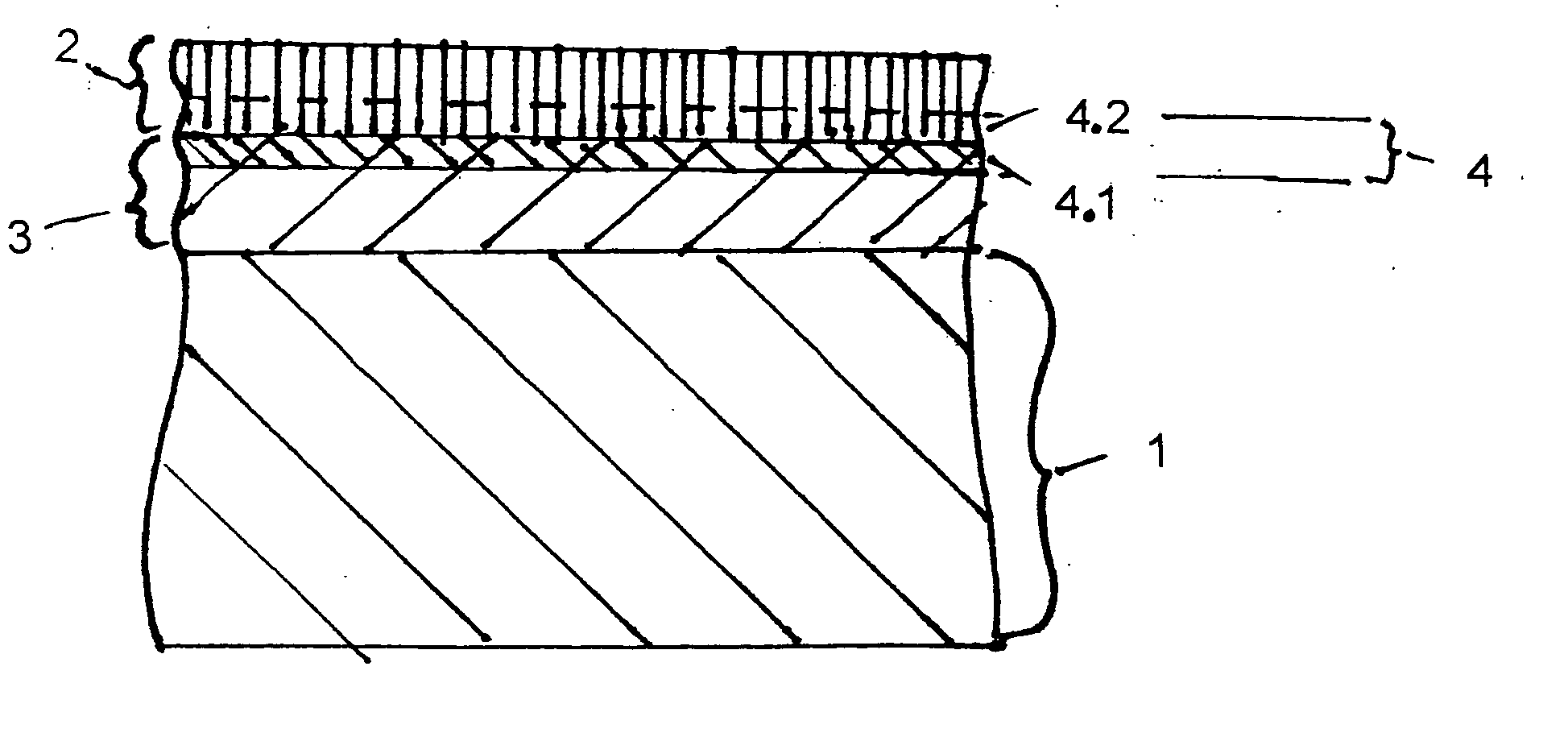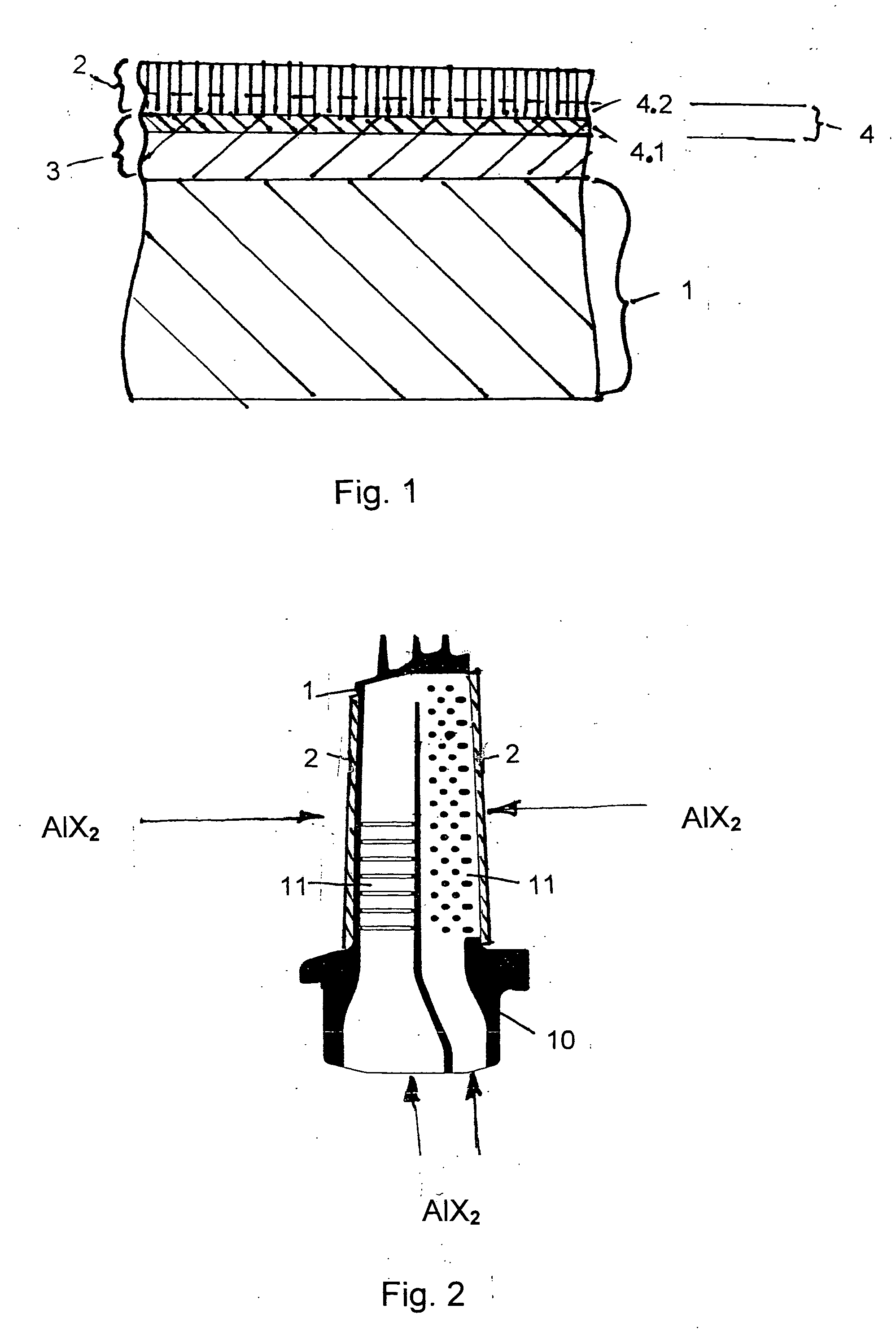Process for applying a protective layer
a protective layer and process technology, applied in the direction of superimposed coating process, solid-state diffusion coating, coating, etc., can solve the problems of thermal conductivity and process has been extensively limited to low-aluminum starting layer, and achieve the effect of improving the oxidation resistance of simple mcraly layer acting as adhesive layer
- Summary
- Abstract
- Description
- Claims
- Application Information
AI Technical Summary
Benefits of technology
Problems solved by technology
Method used
Image
Examples
Embodiment Construction
[0021] Referring to the drawings in particular, a gas turbine blade 10 according to FIG. 2 is of a hollow design and has cooling channels 11 on the inside.
[0022] A base metal layer 1, which may be the base material for the blade 10 of the gas turbine or even for another component of a gas turbine that comes into contact with hot gas, is provided with a ceramic heat insulation layer 2 for protection against high-temperature corrosion and high-temperature erosion. The heat insulation layer 2 consists of zirconium oxide, which is partially stabilized with about 7 wt. % yttrium oxide (YPSZ from Yttria Partially Stabilized Zirconia).
[0023] To improve the adhesion of the heat insulation layer 2 on the base material of the base metal layer 1, a support layer acting as an adhesive layer 3 is applied first on the base material. The adhesive layer 3 consists of a special alloy based on MCrAlY. The letter M designates Ni or Co here. The adhesive layer may be applied according to the physical...
PUM
| Property | Measurement | Unit |
|---|---|---|
| Fraction | aaaaa | aaaaa |
| Fraction | aaaaa | aaaaa |
| Fraction | aaaaa | aaaaa |
Abstract
Description
Claims
Application Information
 Login to View More
Login to View More - R&D
- Intellectual Property
- Life Sciences
- Materials
- Tech Scout
- Unparalleled Data Quality
- Higher Quality Content
- 60% Fewer Hallucinations
Browse by: Latest US Patents, China's latest patents, Technical Efficacy Thesaurus, Application Domain, Technology Topic, Popular Technical Reports.
© 2025 PatSnap. All rights reserved.Legal|Privacy policy|Modern Slavery Act Transparency Statement|Sitemap|About US| Contact US: help@patsnap.com


